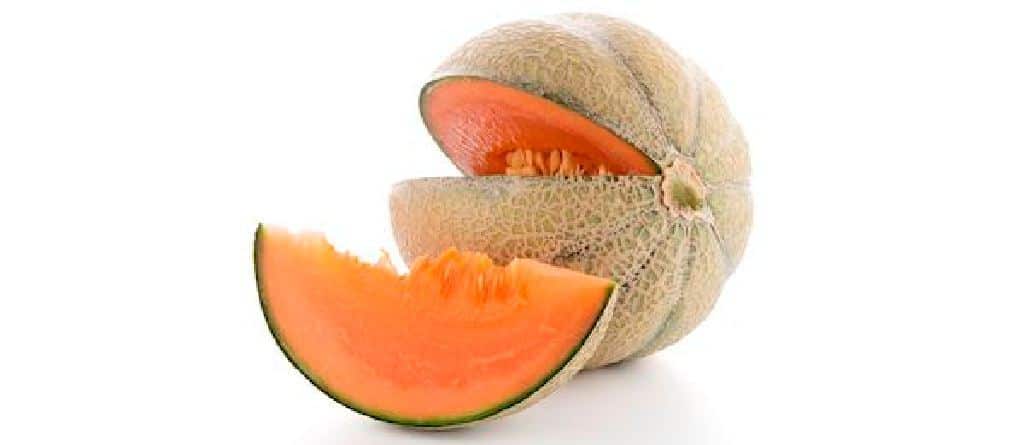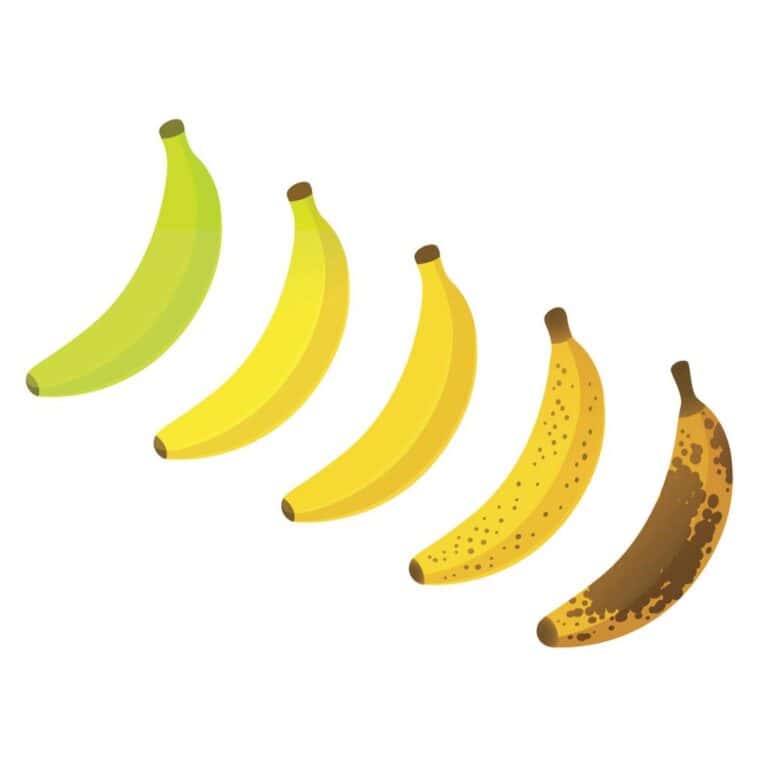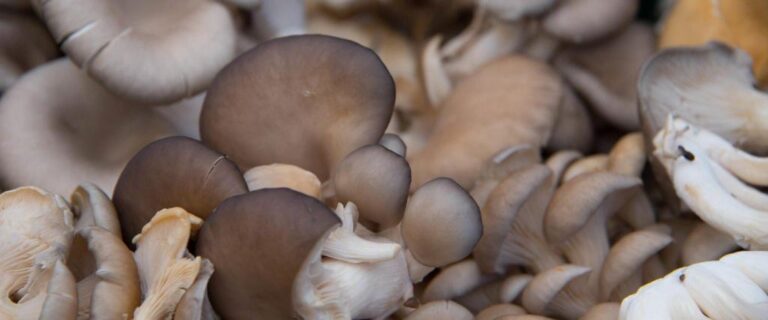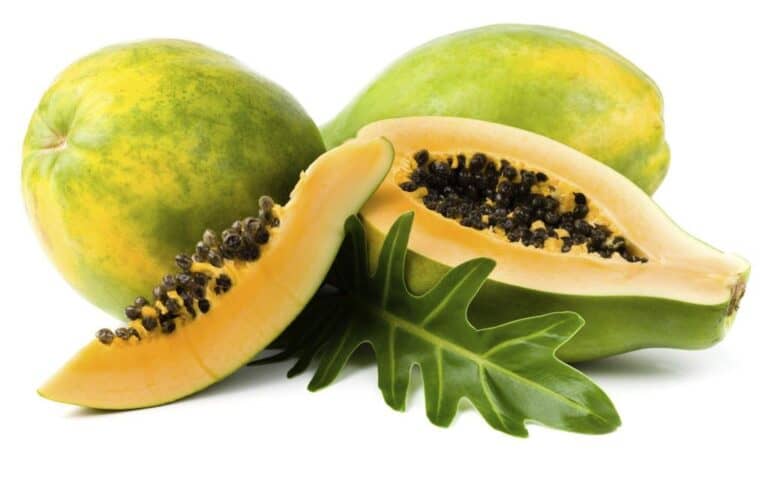How to Sweeten Unripe and Tasteless Cantaloupe: Make It Taste Better

Cantaloupes are a delicious and refreshing summer fruit that can be enjoyed in a variety of ways, from sliced up as a snack to blended into smoothies. But what do you do when you slice open a cantaloupe only to find it tasteless or even bitter?
Don’t worry, you don’t have to throw it out just yet. With the right techniques and ingredients, you can sweeten unripe and tasteless cantaloupe and make it taste better. In this article, we’ll explore different methods to sweeten cantaloupe so you can enjoy this sweet and juicy fruit all season long.
So, let’s dive in and learn how to make your cantaloupes taste better!
Understanding the Ripening Process of Cantaloupe
Cantaloupe is a type of melon that is typically harvested when it is mature but not yet fully ripe. The ripening process of cantaloupe involves a series of physiological and biochemical changes that take place as the fruit matures.
During the early stages of ripening, cantaloupe undergoes a process known as respiration. During this process, oxygen is used up and carbon dioxide and water vapor are given off. As the fruit ripens, it goes through a series of chemical changes that break down the complex sugars into simple sugars.
One of the primary indicators of a ripe cantaloupe is its sweetness. When the fruit is fully ripe, it will be juicy and sweet, with a distinctive aroma and a soft texture. However, if the cantaloupe is harvested too early, it may not have reached its full sweetness potential and may even taste slightly bitter.
To determine if a cantaloupe is ripe, you can use your senses. Look for a uniform, golden-colored skin with a rough texture, and give it a gentle tap; a ripe cantaloupe should sound hollow. You can also smell the stem end of the fruit; a sweet, musky scent is a good indication that it is ripe.
Why Are Some Cantaloupes Tasteless and Bitter?
Have you ever sliced open a cantaloupe and found it to be tasteless or even bitter? There are a few reasons why this might happen.
One reason is that the cantaloupe was harvested too early. Cantaloupes that are picked before they are fully ripe may not have developed their full flavor or sweetness. This is because the fruit is still going through the physical and chemical changes that happen when it ripens. For example, complex carbohydrates are still being broken down into simple sugars.
Another reason why cantaloupes may be tasteless or bitter is due to poor growing conditions. Cantaloupes that are grown in nutrient-poor soil or that do not receive enough water or sunlight may not develop their full flavor potential. Cantaloupes that are affected by heat waves or frost may also be affected by extreme temperatures.
In addition, the presence of certain compounds can also contribute to the bitter taste of cantaloupes. One of these is cucurbitacin, a natural substance that can be found in cantaloupes and other members of the cucumber family. While cucurbitacin is not harmful to humans, it can give cantaloupes a bitter taste, particularly if the fruit is stressed or damaged.
To avoid tasteless or bitter cantaloupes, it is important to choose fruits that are fully ripe and have a uniform, golden-colored skin with a rough texture. You can also look for cantaloupes that have a sweet, musky aroma, as this is a good indicator of ripeness and flavor. Additionally, be sure to store your cantaloupes properly in a cool, dry place to help maintain their flavor and sweetness.
How to Identify an Unripe Cantaloupe
Before we dive into how to sweeten an unripe or tasteless cantaloupe, let’s first talk about how to identify an unripe cantaloupe. There are several signs to look for when choosing a ripe cantaloupe:
- Aroma: Ripe cantaloupes have a sweet aroma, while unripe ones have little to no smell.
- Color: Ripe cantaloupes have a golden tan color with a slight green hue, while unripe ones are mostly green.
- Texture: Ripe cantaloupes are slightly soft at the stem end, while unripe ones are hard and firm.
- Webbing: Ripe cantaloupes have a web-like pattern on their skin, while unripe ones have little to no webbing.
Now that you know how to identify an unripe cantaloupe, let’s discuss how to sweeten it up.
How to Sweeten Unripe and Tasteless Cantaloupe
1. Ripen the Cantaloupe
The first step to sweetening an unripe cantaloupe is to ripen it. Place the cantaloupe in a brown paper bag with an apple or a banana for a day or two. Apples and bananas give off ethylene gas, which can help ripen the cantaloupe faster. Make sure to check on the cantaloupe frequently and remove it from the bag once it is ripe.
2. Chill the Cantaloupe
Cantaloupe tastes better when it’s cold. Once your cantaloupe is ripe, place it in the refrigerator for at least an hour before serving. This will enhance its sweetness and make it more refreshing.
3. Add Some Sugar
If your cantaloupe is still not sweet enough, you can add some sugar to it. Mix a tablespoon of sugar with a tablespoon of water and drizzle it over the cantaloupe. Alternatively, you can sprinkle some sugar directly on the cantaloupe. However, use sugar sparingly, as it can add unwanted calories.
4. Squeeze Some Lime or Lemon Juice
Cantaloupe pairs well with acidic fruits like lime and lemon. Squeeze some lime or lemon juice over the top of the cantaloupe to enhance its flavor. The acidity will balance out the sweetness and make the cantaloupe taste fresher.
5. Sprinkle Some Salt
A pinch of salt can help balance the sweetness of the cantaloupe. Sprinkle a little salt over the slices or cubes. However, be careful not to use too much salt as it can make the cantaloupe taste salty.
6. Mix with Other Fruits
Combine cantaloupe with other complementary fruits, such as berries, peaches, or kiwi, for a fruit salad. This can also add color and texture to the dish. You can also mix the cantaloupe with yogurt or cottage cheese for a protein-rich snack.
7. Experiment with Different Flavors
You can also try adding other flavors like honey, mint, or ginger to the cantaloupe for a unique taste. Drizzle some honey over the top of the cantaloupe, or add some chopped mint leaves for a refreshing twist. You can also try grating some fresh ginger and mixing it with the cantaloupe for a spicy kick.
Delicious Recipes for Your Tasteless Cantaloupe
Here are a few tasteless cantaloupe recipes that you can try to sweeten up your cantaloupe:
1. Cantaloupe Smoothie
Ingredients:
- 1 ripe cantaloupe, peeled and cubed
- 1 banana
- 1/2 cup almond milk
- 1 tsp honey
Instructions:
- Blend the cantaloupe, banana, and almond milk in a blender until smooth.
- Add honey to taste.
- Serve immediately.
2. Cantaloupe Salad
Ingredients:
- 1 ripe cantaloupe, peeled and cubed
- 1 cup blueberries
- 1/2 cup raspberries
- 1/2 cup sliced strawberries
- 1 tbsp lime juice
- 1 tbsp honey
Instructions:
- In a large bowl, mix together the cantaloupe, blueberries, raspberries, and strawberries.
- In a small bowl, whisk together the lime juice and honey.
- Drizzle the lime-honey mixture over the fruit and toss to coat.
- Serve chilled.
3. Cantaloupe Salsa
Ingredients:
- 1 ripe cantaloupe, peeled and diced
- 1 red bell pepper, diced
- 1/4 cup chopped fresh cilantro
- 1/4 cup diced red onion
- 2 tbsp lime juice
- 1 jalapeno pepper, seeded and diced
Instructions:
- In a large bowl, mix together the cantaloupe, red bell pepper, cilantro, red onion, and jalapeno pepper.
- Add lime juice and toss to combine.
- Serve with tortilla chips.
Can You Make Cantaloupe Sweeter after Cutting?
Once you have cut into a cantaloupe, the fruit begins to lose moisture and nutrients at a faster rate than before. This process can cause the cantaloupe to spoil quickly if not stored correctly. As a result, it is not possible to make a cantaloupe sweeter once it has been cut.
If you have cut into an unripe or tasteless cantaloupe, the best thing you can do is to refrigerate it immediately. This will help to slow down the ripening process and preserve the cantaloupe’s sweetness. When refrigerated, the cold temperature will cause the sugar content in the cantaloupe to concentrate, making it sweeter than it was before.
It is crucial to store the cut cantaloupe properly. You should transfer the cut pieces to an airtight container or a tightly sealed plastic bag. This will help prevent the cantaloupe from absorbing any unwanted odors from other foods in the refrigerator.
It is also important to note that you should try to consume the cut cantaloupe as soon as possible, preferably within two to three days. If you notice any signs of spoilage, such as a foul odor, slimy texture, or mold growth, you should discard the cantaloupe immediately.
Key Takeaways
- To sweeten an unripe or tasteless cantaloupe, first, identify it by its lack of aroma, green color, firm texture, and little webbing.
- To ripen the cantaloupe, place it in a brown paper bag with an apple or banana for a day or two.
- Chill the cantaloupe before serving to enhance its sweetness and make it more refreshing.
- Add some sugar, lime or lemon juice, or salt to balance out the sweetness of the cantaloupe.
- Combine cantaloupe with other complementary fruits, such as berries or peaches, or mix it with yogurt or cottage cheese for a protein-rich snack.
- Experiment with different flavors like honey, mint, or ginger to add a unique taste to the cantaloupe.
- Try different tasteless cantaloupe recipes like smoothies, salads, and salsa to enjoy the sweetness of the fruit in a new way.






